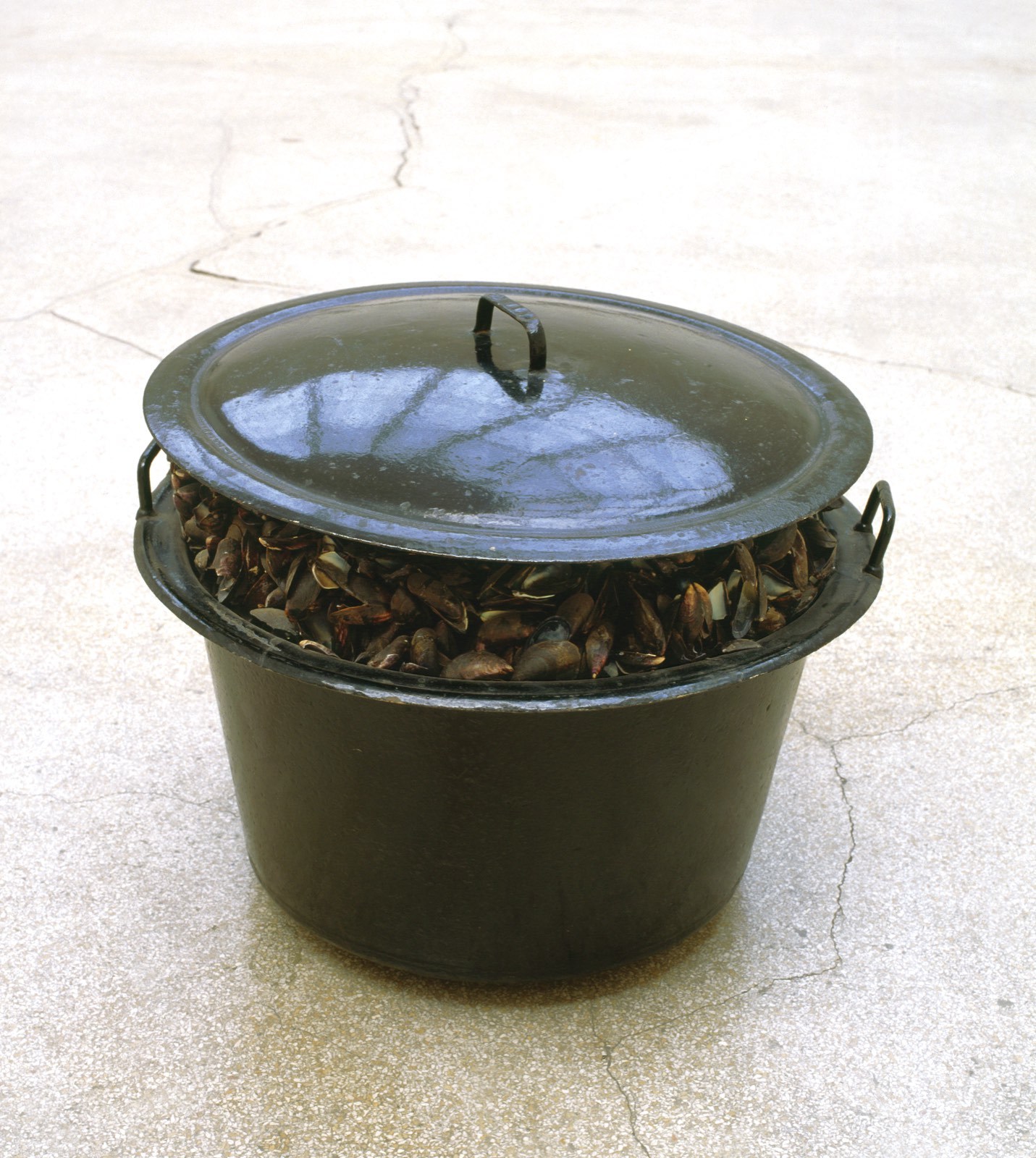1973
mixed media
h. 145cm x b. 86cm x d. 16cm
1999 schenking
mixed media
h. 145cm x b. 86cm x d. 16cm
1999 schenking
NL - ‘Miroir d’Époque Regency’ (1973) bestaat uit een vrij grote, bolle spiegel in een kader in Regency-stijl (eind 18de – begin 19de eeuw), bekroond met een adelaar. Dit zeer beladen symbool uit onze culturele en politieke geschiedenis kwam al eerder voor in Marcel Broodthaers’ bekende ‘Musée d’Art Moderne – Département des Aigles’. In dit fictieve museum, dat hij in 1968 in zijn woning in Brussel oprichtte en een centraal werk is binnen zijn oeuvre, ‘stelde’ de kunstenaar verschillende aspecten van zijn discours zelf ‘tentoon’.
Minstens even belangrijk is de bolle spiegel, die dit kunstwerk als het ware maakt tot een ‘metatentoonstelling’, een virtueel (spiegel)beeld dat de reële tentoonstelling rondom de spiegel weergeeft. Zo komt niet het kunstwerk zelf centraal te staan, maar wel de omgeving ervan, de museale context waarin het wordt getoond. ‘Miroir d’Époque Regency’ is een metafoor voor Broodthaers’ kritiek op het museum als instituut: net zoals de bolle spiegel de realiteit vertekent, verstoren musea voor hem de kunst door haar en haar makers hun visie en ideeën op te leggen.
ENG - ‘Miroir d’Époque Regency’ (1973) consists of a very large convex mirror in a Regency-style frame (late 18th to early 19th century), topped with an eagle. This highly-charged symbol from our cultural and political history had previously appeared in Broodthaers’ well-known ‘Musée d’Art Moderne – Département des Aigles’. In this imaginary museum, which he set up at his home in Brussels in 1968 and which is a key work in his oeuvre, he himself put several aspects of his discourse on display.
The convex mirror is at least as important. It is what makes this artwork into a ‘meta-exhibition’, a virtual image (a mirror image) that reflects the real exhibition around it. In this way it is not the artwork itself that is the main thing, but its surroundings, the museum context in which it is shown. ‘Miroir d’Époque Regency’ is a metaphor for Broodthaers’ criticism of the museum as an institution: in the same way as the convex mirror distorts reality, in his view museums distort art by imposing their vision and ideas on it and its creators.
FR - ‘Miroir d’Époque Regency’ (1973) se compose d’un miroir assez grand, convexe de style Regency (fin 18ème – début 19ème siècle), couronné d’un aigle. Ce symbole fortement chargé de notre histoire culturelle et politique s’est déjà retrouvé précédemment dans le célèbre ‘Musée d’Art Moderne – Département des Aigles’ de Marcel Broodthaers. Dans ce musée fictif, qu’il aménagea dans son habitation à Bruxelles en 1968 et qui occupe une position centrale dans son oeuvre, l’artiste ‘exposa’ différents aspects de son discours.
Le miroir convexe est au moins aussi important, il fait de cette oeuvre d’art une véritable ‘méta-exposition’, une image virtuelle (dans un miroir) qui reflète l’exposition réelle autour du miroir. Ce n’est donc pas l’oeuvre d’art qui occupe la position centrale, mais bien son environnement, le contexte muséal dans lequel il est exposé. ‘Miroir d’Époque Regency’ est une métaphore pour la critique de Broodthaers sur le musée en tant qu’institut: à l’instar du miroir convexe qui déforme la réalité, il estime que les musées perturbent l’art en lui imposant ainsi qu’à ses créateurs leur vision et leurs idées.
Collectienummer : 147





































































